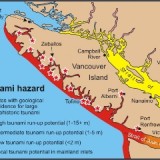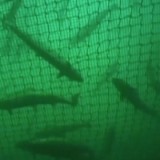From BC Business – June 6, 2011
by David Godsall
The B.C. Salmon Farmers Association drops the gloves in a social media battle with online activists.
“Hitler loves fish farms.” “Salmon farming kills.” “Freedom for farmed
fish!” This is just a sample of comments that could be found floating
around the Twittersphere recently.
Not so long ago, common wisdom among communications strategists would
have been that responding to such online barbs could only lead to
self-immolation in a flame war. But today it’s a new world; with the
majority of Canadians plugged into social media, online detractors are
no longer merely a fringe that can be left unchallenged.
The B.C. Salmon Farmers Association (BCSFA) is one organization that decided to confront its detractors head on, and when it launched a series of inflammatory TV ads as part of a PR blitz last January, it kicked an online hornet’s nest.
Instead of ducking the social media frenzy, the BCSFA engaged the activists directly. Using the Twitter handle @salmonfacts, the association responded to critics with corrections and links to sources, or more often, to its own website (bcsalmonfacts.ca), where there’s usually a lively discussion.
A recent BCSFA tweet, for example, responded to common claims about artificial colouring in farmed salmon: “We don’t dye farmed salmon. The colour comes from an important ingredient in their food,” wrote @salmonfacts. The tweet included a link to a video featuring salmon farmer Jeanine Sumner
describing the “facts” as she sees them, followed by a long stream of
mostly incredulous comments from critics, expressed with varying degrees
of politeness. The exchange ultimately settled into a substantive
discussion on the origins of the carotenoid pigments that give salmon
their colour.
The B.C. Salmon Facts campaign, which concluded in April, was a
$1.7-billion effort consisting of print and TV ads, as well as a
comprehensive online push. According to Mary Ellen Walling, executive
director of the BCSFA, the campaign was conceived out of the realization
that the conversation – mudslinging and all – was happening whether the
salmon farmers chose to participate or not, so they might as well just
dive in.
“It’s our corporate and public reputation that we need to protect,”
Walling says, “so we decided to take that step forward into that sphere
and accept the risk that comes with that along with the potential
upside.”
The risks are obvious. The association’s humorous television ads, for
example, portrayed anti-aquaculture activists as hucksters peddling
spurious claims, then invited a response by directing viewers to a forum on its website
where they could voice their opinions. But the upside in reputation
management is huge: B.C. exported $469.7-million worth of salmon
products in 2010, and until recently the public was only hearing one
side of the farmed salmon argument.
Only a decade ago, the most effective tool available to
anti-aquaculture activists was a bumper sticker. Now an individual
campaigner can build a chorus of criticism out of 140-character attacks.
According to Natasha Netschay Davies, who heads the social media
operation at Peak Communications Inc., participating in the discussion
is not optional. “Even if you fear engagement, at the very least you
have to monitor these conversations and make sure that you’re putting
out the correct information,” she advises.
Online accountability works both ways: while the BCSFA set out to
correct common fallacies, the slightest misstep on its part would leave
the organization vulnerable to accusations of corporate spin. Norman
Stowe, a partner with Pace Group Communications Inc. who has been
studying these PR battles since the famous 1990s War in the Woods,
notes that “if someone from a forest company or a salmon company comes
out and says something, they better be sure that they’re 110 per cent
accurate because they will be held to a higher level of
accountability.”
Environmental activists on the other hand, especially in coastal B.C.,
enjoy a baseline level of sympathy from the public. “It’s an emotional
appeal that they have on their side,” Stowe points out. He applauds the
B.C. Salmon Facts campaign, pointing out that the salmon farmers
association deserves credit for acknowledging that social media are
their critics’ chosen platform, and engaging directly. He also has some
advice for other organizations facing Twitter takedowns: “Don’t pretend
[social media] don’t exist. Don’t pretend that that audience isn’t your
audience. You’d be foolish to see these tools there, to see how they’re
being used successfully by your opponents, and not get involved.”
The BCSFA has gone out on a limb. The association is not just putting up a website and tweeting its side of the story;
it’s using traditional media to take on an organized, vocal group of
critics, and provoking a more intense online engagement. And given how
entrenched the activists are, the salmon farmers might be swimming
upstream in their efforts to change the public’s perception of their
industry. The Salmon Facts campaign has just recently wrapped up, so we
should know how they did by the time the sockeye are running.
Read original article



